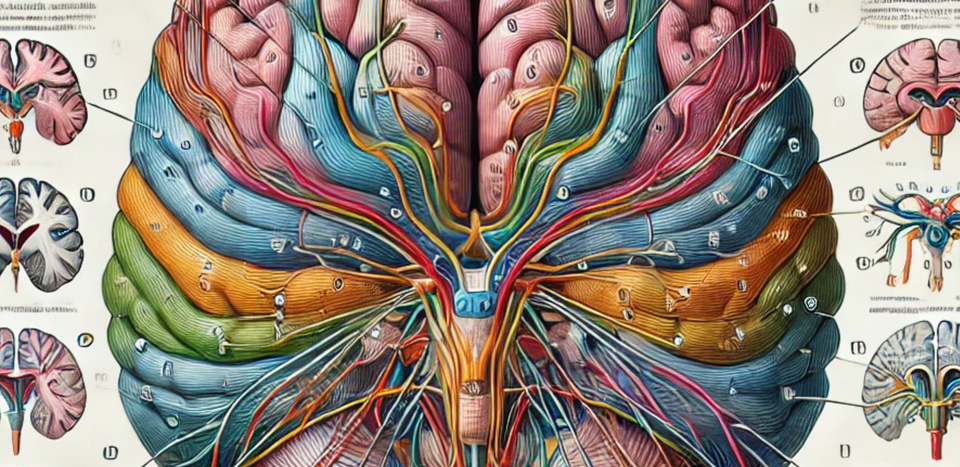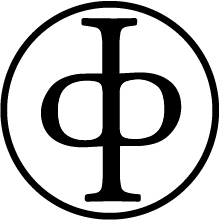Cranial Nerves

Just the bits you need to pass the exam.
The cranial nerves are twelve paired nerves.
How to remember modalities
"Some say marry money but my brother says big b**** matter more"
1 - Olfactory Nerve
- Sensory - smell
- Arise from cell bodies in olfactory epithelium
- Enters skull through cribriform plate
Head trauma with anosmia = suspected cribriform plate fracture
2 - Optic nerve
- Sensory - vision and afferent limb of pupillary light reflex
- Arise from cell bodies in the retina
- Enters skull through optic canal
- Decussates at the optic chiasm sending the medial fibres to the contralateral hemisphere
3 - Oculomotor nerve
- Motor and parasympathetic
- Arises in the midbrain
- Parasympathetic fibres synapse in the ciliary ganglion
- Enters orbit through superior orbital fissure
Supplies
- Superior rectus
- Inferior rectus
- Medial rectus
- Inferior oblique
- Levator palpabrae superioris
Parasympathetics
- Via Edinger-Westphal nucleus
- To the ciliary muscles for accommodation
- To the sphincter of the iris for pupil constriction
When damaged, the eye points 'down and out' and there may also be ptosis
Loss of pupillary light reflex is an early sign of oculomotor nerve compression
4 - Trochlear nerve
- Motor
- Arises from cell bodies in the midbrain
- Only nerve to arise from posterior surface of brainstem
- Passes through superior orbital fissure
Supplies
- Superior oblique
When damaged, the patient has double vision when looking down
5 - Trigeminal nerve
- Sensory and Motor
- Sensory to skin of face
- Motor to masseter and temporalis
- Arises from lateral pons
- Sensory cell bodies found in trigeminal ganglion
Sensory branches
- V1 Ophthalmic - Superior orbital fissure
- V2 Maxillary - Foramen rotundum
- V3 Mandibular - Foramen ovale
Sensation of the anterior 2/3 of the tongue is V3, but taste is chorda tympani from CN 7
The jaw reflex triggers afferents of V3 that synapse directly in the motor nucleus with the motor fibres to masseter and temporalis
Here's our post on trigeminal neuralgia
6 - Abducens nerve
- Motor
- Arise from cell bodies in the pons
- Long, tortuous journey making it vulnerable to compression
Supplies
- Lateral rectus
When damaged, the eye will deviate medially and the patient gets double vision when looking anywhere other than laterally to the other side
7 - Facial nerve
- Motor, sensory and parasympathetic
- Arises from junction of pons and medulla
- Two roots - motor and intermediate
- Pass through internal acoustic meatus and facial canal in the petrous temporal bone
- Join at the geniculate ganglion
- Leaves skull via stylomastoid foramen
- Passes through parotid gland
Motor supply to
- Facial muscles
- Scalp muscles
- Stapedius
- Stylohyoid
- Posterior belly of digastric
Parasympathetics
- Sublingual gland
- Submandibular gland
- Lacrimal gland
- Other glands of nose and palate
Upper motor neurone lesions usually spare the forehead as these muscles have bilateral motor supply
8 - Vestibulocochlear
- Sensory
- Arises from vestibular and cochlear nuclei in the pons
- Passes through internal auditory meatus
- Pierces temporal bone into inner ear
- Vestibular nerve carries sensation of balance
- Cochlear nerve carries sensation of hearing
Fibres from the vestibular nerve to the lateral reticular formation of the medulla are involved in the vomiting reflex
9 - Glossopharyngeal nerve
- Motor, sensory and parasympathetic
- Arises from lateral medulla
- Passes through jugular foramen
Motor supply
- Stylopharyngeus
- Gag reflex
Sensory supply
- External ear (tympanic nerve)
- Posterior third of tongue (sensory and taste via lingual, tonsillar and pharyngeal nerves)
- Carotid sinus nerve (baroreceptors and chemoreceptors)
Parasympathetic supply
- Parotid gland
10 - Vagus nerve
- Motor, sensory and parasympathetic
- Arises from lateral medulla
- Passes through jugular foramen
Motor supply
- Pharyngeal constrictors (except stylopharyngeus)
- Intrinsic muscles of the larynx
- Muscles of palate (except tensor veli palatini)
- Muscle of superior 2/3 oesophagus
Sensory supply
- Taste from epiglottis and palate
- Auricle
- External auditory meatus
- Dura mater of posterior cranial fossa
- Visceral sensory from base of tongue, pharynx, larynx, trachea, bronchi, heart, oesophagus, stomach and proximal intestine
Parasympathetic supply
- Smooth muscle of trachea and bronchi
- Digestive tract
- Myocardium
11 - Accessory nerve
- Motor
- Two roots
- Cranial root arises from the nucleus ambiguus in the medulla
- Spinal root arises from spinal nuclei in C1 - C5
- Passes through jugular foramen
Motor supply
- Sternocleidomastoid
- Trapezius
12 - Hypoglossal nerve
- Motor
- Arises from hypoglossal nucleus in the medulla
- Passes through hypoglossal canal
Motor supply
- Genioglossus
- Hyoglossus
- Styloglossus
- Thyrohyoid
- Geniohyoid
Lesions of the hypoglossal nerve produce deviation of the tongue towards the affected side, as genioglossus acts to 'push' the tongue forward
What is Vernet's syndrome?
- Jugular foramen syndrome
- Compression of nerves at jugular foramen due to tumour, aneurysm etc
- Presents with dysfunction of nerves 9, 10 and 11
References and Further Reading
Here's a complete reference with everything you could possibly ever want to know and more.
Primary FRCA Toolkit
Members receive 60% discount off the FRCA Primary Toolkit. If you have previously purchased a toolkit at full price, please email anaestheasier@gmail.com for a retrospective discount.

Discount is applied as 6 months free membership - please don't hesitate to email Anaestheasier@gmail.com if you have any questions!
Just a quick reminder that all information posted on Anaestheasier.com is for educational purposes only, and it does not constitute medical or clinical advice.
